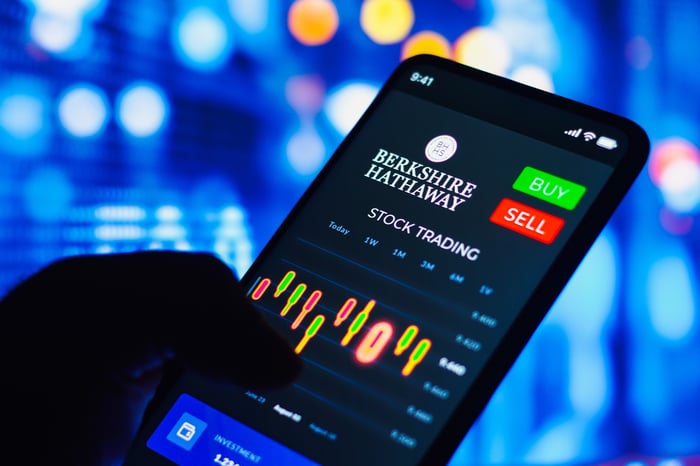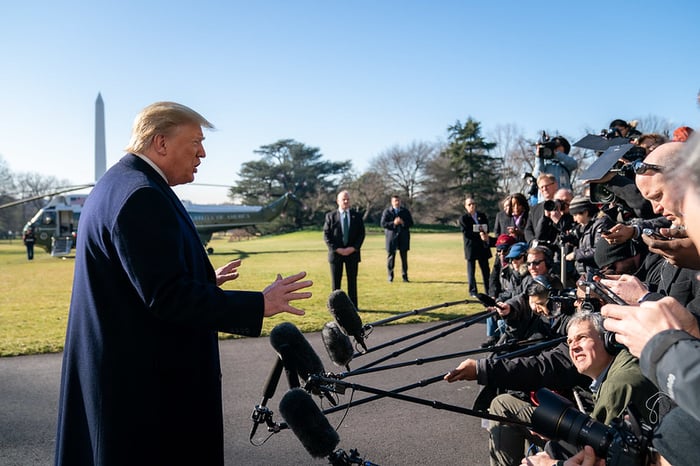Should You Buy Berkshire Hathaway (BRK.B) While It’s Hovering Around $500?
The answer could depend on your investing time horizon.
Have you ever seen a puzzle that asks you to identify what doesn’t seem to belong in the picture? That comes to mind when I look at the list of stocks with market caps of $1 trillion or more.
Only 10 companies (and 12 stocks, because two have multiple share classes) are members of the trillion-dollar club. All of them have artificial intelligence (AI) pedigrees except one: Berkshire Hathaway (BRK.A 0.55%) (BRK.B 1.06%).
While Berkshire is an outlier in this elite club, I think the huge conglomerate deserves its spot. Most investors can’t afford the Class A shares, which trade at close to $745,000. But should you buy Berkshire Hathaway Class B stock while it’s hovering around $500?
Image source: Getty Images.
Playing devil’s advocate
I’ll start off answering the question by playing devil’s advocate. There are several arguments against buying Berkshire Hathaway right now.
Perhaps the top reason for hesitation in many investors’ minds is the impending departure of Warren Buffett as the company’s CEO. Buffett and Berkshire have become synonymous through the years. However, he is handing over the reins as top executive to Greg Abel as of Jan. 1, 2026. Some may worry that Berkshire Hathaway’s allure will be diminished without Buffett at the helm.
Another argument against buying Berkshire stock is its valuation. Shares currently trade at a forward price-to-earnings ratio of 22.8. The stock is only around 8% below its all-time high. Even Buffett seems to think the valuation isn’t compelling, considering that he hasn’t authorized any stock buybacks since last year.
Economic uncertainty is another factor that could prevent some investors from buying Berkshire. Federal Reserve chair Jerome Powell recently stated that rising inflation and unemployment present a “challenging situation” for the Fed. Some of Berkshire’s businesses could be negatively impacted by these macroeconomic concerns.
Arguments in favor of buying Berkshire Hathaway
While those might be compelling arguments against buying Berkshire Hathaway stock, there are also some reasonable counterpoints. For example, Buffett isn’t leaving Berkshire altogether; he will stay on as chairman. Importantly, he doesn’t think the company will miss a beat without him as CEO. Buffett even said at the annual shareholder meeting in May 2025 that he expects Berkshire will be in better shape with Abel running the business.
What about the valuation concerns? They shouldn’t be dismissed. However, Berkshire has had higher earnings multiples in the past but delivered enough growth to drive its share price higher. I think history will repeat itself over the long run. If you’re a long-term buy-and-hold investor, Berkshire’s current valuation (which is much lower than the S&P 500‘s, by the way) shouldn’t keep you from buying the stock.
As for economic uncertainty, it’s a legitimate issue as well. The Fed’s rate cuts could prop up the economy, though. Even if not, Berkshire Hathaway could be widely viewed as a safe haven if the economy stumbles. I suspect its stock would hold up better than most in the event of an economic pullback.
Importantly, Berkshire offers diversification that’s almost at an exchange-traded fund (ETF) level. The company owns over 60 subsidiaries representing a wide range of industries. It also has equity holdings in around 40 other publicly traded companies across multiple sectors.
Final verdict
So should you buy Berkshire Hathaway Cass B shares while they’re trading around $500? I think answer is yes — if you have a long-term investing time horizon.
The case against buying Berkshire is mainly focused on near-term concerns. It’s entirely possible that the stock could decline over the next year because of the issues discussed earlier. However, the long-term case for Berkshire is persuasive, in my view.
Keith Speights has positions in Berkshire Hathaway. The Motley Fool has positions in and recommends Berkshire Hathaway. The Motley Fool has a disclosure policy.

